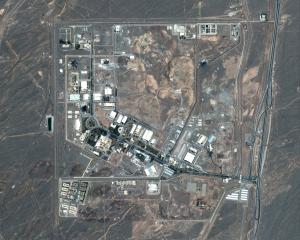Whichever way you look at it, New Zealand’s September quarter labour market data is extremely strong. The 1.4% increase in employment for the three months surprised all, especially given the exceptional increase in employment in the March quarter of 1.4% and the 2.4% growth in June.
Markets were readying themselves for a technical correction but were proved wrong as the annual increase in jobs created was a record 6.1%.
The unemployment rate fell to 4.9% in September, the lowest since 2008. The participation rate rose in September to 70.1%, the highest level on record.
To be fair, Statistics New Zealand has modified the way it measures employment and unemployment, releasing workforce data at the same time as two measures of wages and salaries. The other point to note is part-time employment surged in the quarter while full-time work grew only modestly. This is the reverse of what happened in the previous quarter and proves again the part-time/full-time mix can be very volatile. But with the participation rate now at a record high, there cannot be many people available for full-time work. Accordingly, part-time growth may play an increasing role in the future.
At first glance, then, the New Zealand economy seems to be buzzing along with more people in work, paying their taxes and contributing to growth. But there are some things to consider, one of the main ones being where the labour is going to come from to meet New Zealand business needs.
The Council of Trade Unions makes the point of youth employment having taken a downward turn. The proportion of people aged 15 to 24 not in employment, education or training (Neet) has worsened since June, after accounting for seasonal effects, from 10% to 11.1% of the working-age population. There are now 74,000 of those young people doing not very much as they prepare for adulthood.
The CTU also says the current growth of the economy is strongly dependent on more hours worked when it should be growing through higher-value work.
The increase in the average ordinary time hourly wage of 1.7% from a year ago is one of the lowest increases recorded. The low rise is partly driven by the shift of hours worked to lower-wage industries such as accommodation and food services and retail trade.
Whatever the tightness in the labour market may be, it is simply not increasing nominal wage pressure. The labour market will have a minimal impact on inflation forecasts, even as capacity constraints seemingly become more intense.
The saviours for people receiving no or low wage increases is New Zealand’s low inflation rate of 0.2% and low interest rates. Inflation is not expected to increase until at least 2018 and the Reserve Bank is likely to cut its Official Cash Rate to 1.75% on Thursday, locking in low interest rates for the foreseeable future. Act New Zealand is calling for tax cuts after strong employment figures arrived on the same day as a significant upward shift in milk prices for this country’s dairy farmers. However, the time is not right.
With still a large number of young people not working or training, and still high numbers of Maori and Pasifika out of work, the Government should use some of its large annual surplus to find ways to reduce further the number of people out of work. New Zealand is facing a severe skill shortage and immigrants have been arriving to take up those positions. With some thought to how schools and tertiary institutions can work with businesses to address looming shortages, young people and those still out of work or wanting more may, in the future, fill positions created in a growing economy. Work has to start soon and not be left to chance.












